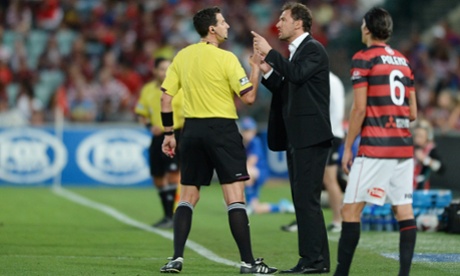
The Western Sydney Wanderers’ manager Tony Popovic’s rotation policy has come under much scrutiny this season. On Friday night’s coverage of the top of the table clash with Brisbane Roar, it didn’t take long for the topic to be mentioned once again. “Tony Popovic is back to tinkering with his starting 11” said David Basheer at the start of the coverage.
It has been a major talking point this season, but should it be? Firstly, there is merit to the argument that Popovic is a ‘tinkerman’. This season, on average, A-League sides make just shy of two changes (1.9) to their starting 11 per match. Comparatively, Western Sydney make nearly three changes per match (2.9).
But despite the merits to the claims of Popovic’s rotation policy, there has been little discussion about when, how and why Popovic makes changes. Looking further at the numbers, and comparing them to last season, a clear pattern emerges.
During a near identical period of time, in both the 2012-13 and 2013-14 seasons, Western Sydney made wholesale changes to their starting 11. Both spells came during the summer football schedule, when the weather is hottest, the pitches hardest and the matches come more quickly. Both schedules involved three interstate (or overseas) matches and had an average of four or more changes per match.
Also, this season, for the fixture away to Wellington Phoenix, Popovic made five changes – bringing in Michael Beauchamp, Dean Heffernan, Iacopo La Rocca, Tahj Minniecon and Labinot Haliti. For the next match, at home to Melbourne Heart, Popovic recalled Jerome Polenz, Matthew Spiranovic, Adam D’Apuzzo and Youssouf Hersi.
The reasons for the changes are simple. Studies have shown that “total injury rates and muscle injury rates increased in matches with short recovery compared with matches with long recovery” (Bengtsson et al. (2013)) and that there is a strong link between long distance travel causing travel fatigue and reduced performance.
So it appears the policy is less rotation as it is squad management.
Paco de Miguel, the long-time fitness coach of notorious squad rotator Rafael Benítez supports those ideas. He stated there are three key reasons for rotating a squad: to prevent injuries (due to accumulative fatigue); to ensure players perform at their best and are at their freshest; and to promote competition for places throughout the squad.
Despite the faux controversy of Popovic’s rotation of his side, one thing that has remained a constant throughout the two seasons is the Wanderers’ structure. The 4-2-3-1 formation is the foundation for the Wanderers, who base their play around their extremely well drilled pressing and counter attacking abilities.
Their pressing was again evident against Brisbane Roar and is an example of how important a clear defined structure is to a successful side.
While the front four of Mark Bridge, Shinji Ono, Brendon Santalab and Youssouf Hersi remained unchanged from the previous two fixtures, the pressing of the Wanderers requires the whole team to work as a cohesive unit – with every player required to fulfil their role.
During the match, one of the front two (of Ono and Santalab) looked to pressure Jade North on the ball, whilst the other stayed centrally to prevent simple passes into midfield. This was because Western Sydney look to make the playing area as small as possible, and required Hersi to come in off the wing to prevent a simple pass into Matt Smith for a switch of play. Elsewhere, in midfield, Aaron Mooy and the returning Mateo Poljak were required to pressure the nearest midfield options and Mark Bridge pressured the right back. Further back, the defensive line is required to maintain a high enough line to prevent spaces in between defence and midfield and to win first and second balls when the opponent goes long. Had one individual consistently failed to perform their role, the whole system would break down.
Defensively, Western Sydney are a well-oiled machine and despite perceived rotation they are the most consistent side in the A-League since their involvement, averaging nearly two points per game. This is due to Popovic’s (and his staff’s) coaching and ability to define and communicate specific roles to players within the system. It is also due to his ability to manage his squad, ensuring they have players who are fit, fresh and ready to execute a plan.

